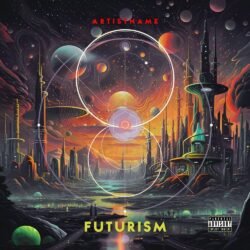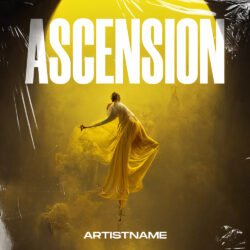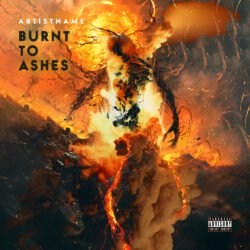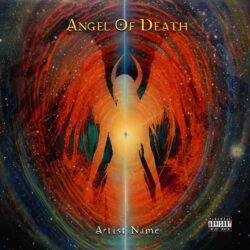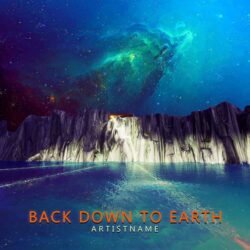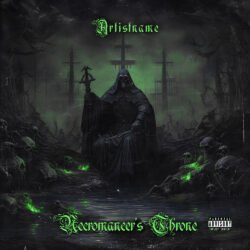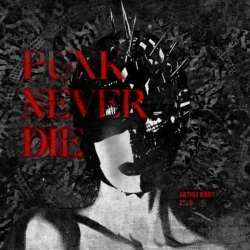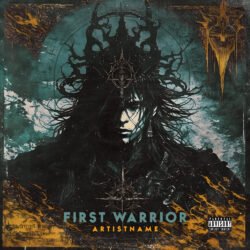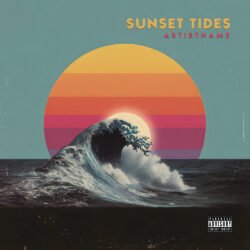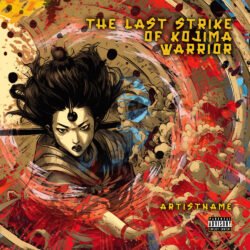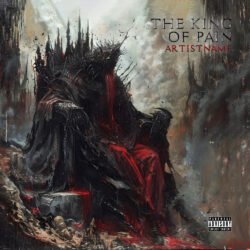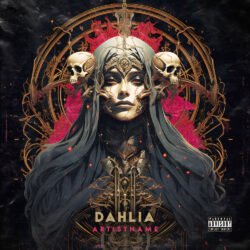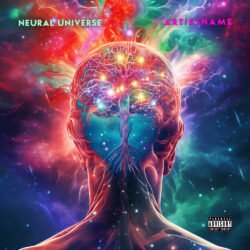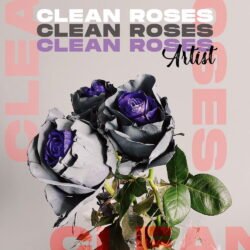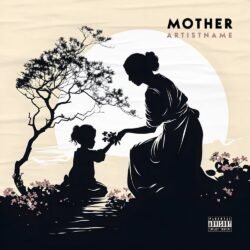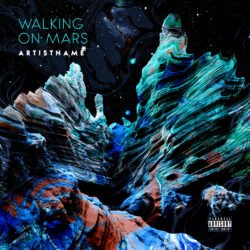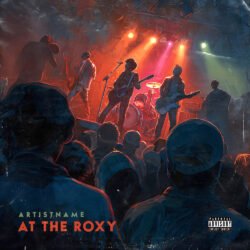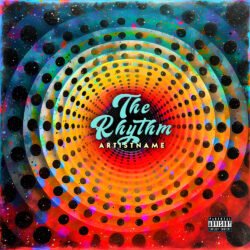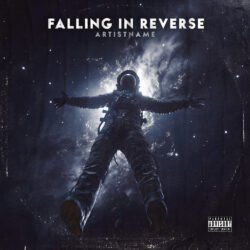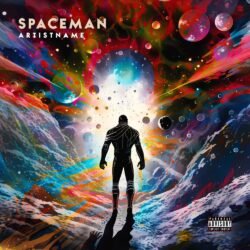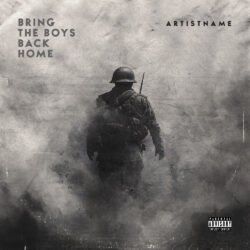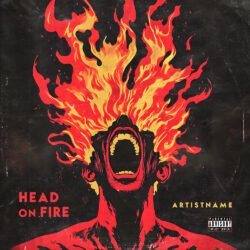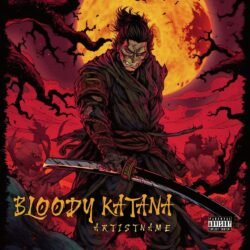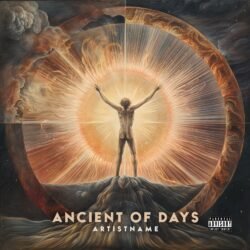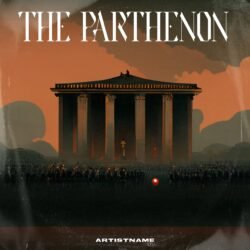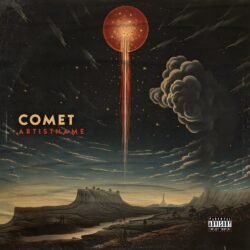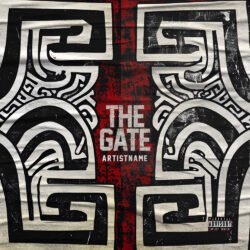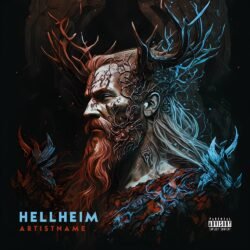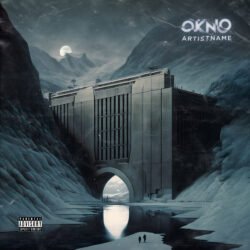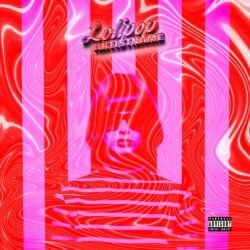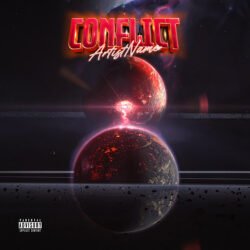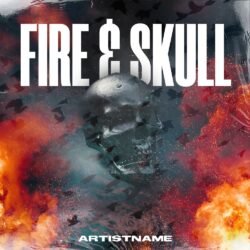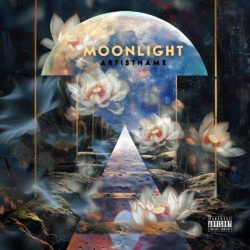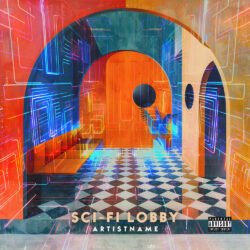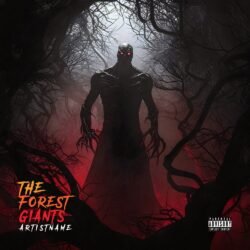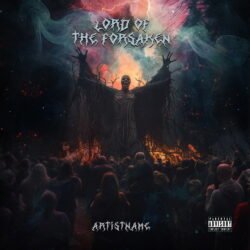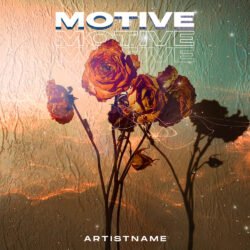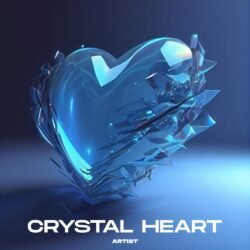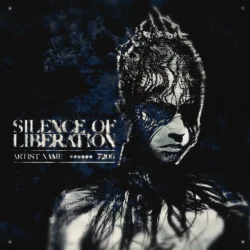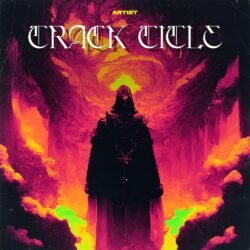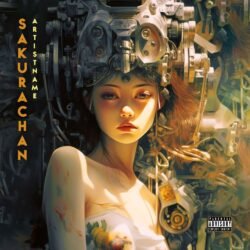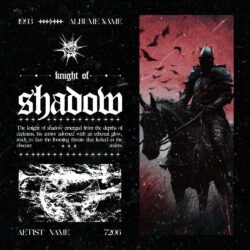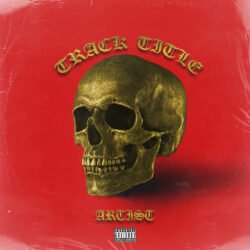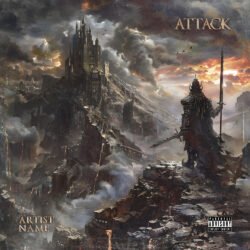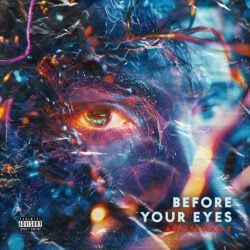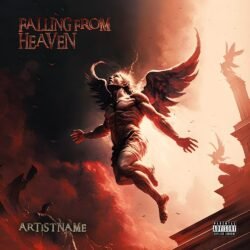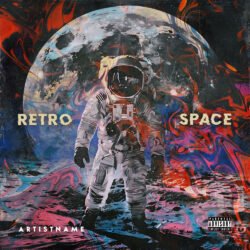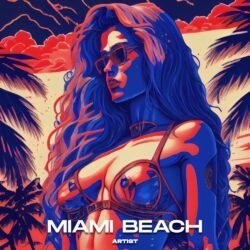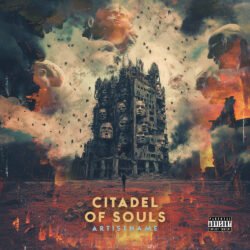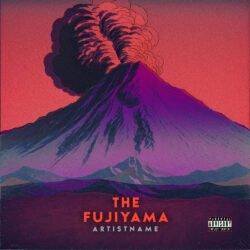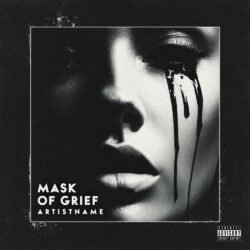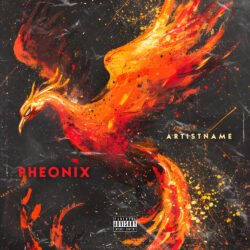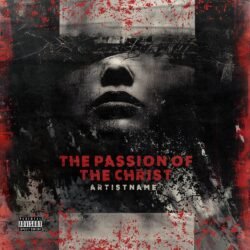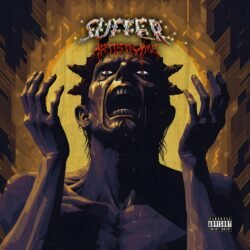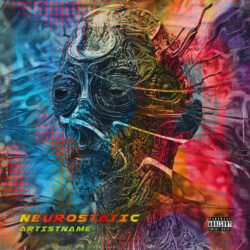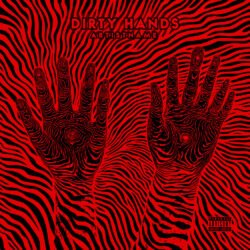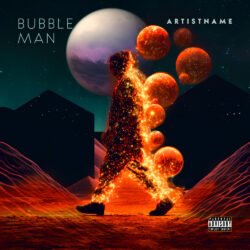Premade Rock Album Cover Art Designs
Download exclusive premade rock music album cover designs and digital artworks for sale created by artists, for artists.
Can’t discover your artwork? We’ve got you covered! Buy cover artwork's job is to curate a collection of unique exclusive licenses download premade artworks for sale, also provide design services for artists, musicians, bands, singers, vocalists, DJs, producers, record labels, authors, content creators, distributors, and publishers with the collaboration of top artists, designers, and makers that would elevate music into visual imagery.
Covering every genre, from Rock 'n' Roll, Classic rock, Punk rock, Hardcore punk, new Wave, Alternative rock, and Indie rock, to Contemporary rock. Grab your favorite Artworks (illustrations, images, photos, collages, and graphic arts) and use them for Albums, Singles, EPs, Posters, Merchandise and more on Distrokid, Spotify, Apple Music, Bandcamp, Soundcloud, Tidal, Deezer, and other Streaming, Publishing, and Printing Services. You also can turn them into a short looping animation and use it for streaming services like Spotify videos or YouTube and other social media like Instagram stories or TikTok.
A Dive Into Rock Music
Rockabilly & Rock 'n' Roll
American & British folk revival
Surf rock / Instrumental
Garage rock
Classic rock
(Mersey) Beat / British Invasion
Folk rock
Country rock
Pop rock
Soft rock
Psy & Acid rock / Psychedelia
Hard Rock
Progressive, Art & Symphonic rock
Southern rock
Glam, Glitter & Shock Rock
Heartland rock
A.O.R.(Adult Oriented rock)
Punk
Pub Rock & Proto Punk
Punk Rock
Anarcho & Crust Punk, D-Beat
Post-Punk
Wave
No wave
New wave
Horror Punk & Psychobilly
Hardcore punk
Post-Hardcore, Emo & Screamo
Synthcore & Crunkcore
Alternative rock
Indie rock
Noise rock
Grunge
Rap rock / Rapcore / Funk metal
Skate punk
Pop Punk
Post-Grunge
Post-Rock
Contemporary Rock
Emo rock
Nu Rawk
New Prog, Nu Prog & Post-Prog rock
Dance-Punk & Nu Rave
Rock 'n' Roll
Rock in the fifties was still in the early stages of its infancy. The first Rock genres were rather unaffiliated and came from many different origins. The precise origin of Rock ‘n’ Roll is very complex and often part of a deeper debate. Skiffle, Rockabilly and Folk Revivals are all primitive forms of Rock, showing a slow development from different paths towards a more unified sound during Rock’s Golden Age. Be that as it may, Rock ‘n’ Roll itself – the main genre – was a groundbreaking milestone. The music broke great social barriers for the first time in history. Rock ‘n’ Roll connected white cultures (especially the average middle class white American young family) with black cultures (particularly exciting black R&B musicians). But Rock also connected the United Kingdom with the United States. British Skiffle was a reaction on the popularity of American Rock ‘n’ Roll. Alas, as Skiffle never broke through, Rock ‘n’ Roll became welcomed by the British, leading to British Blues Rock and the British Invasion. Last but not least, R‘n’R dissolves the musical barrier between young and old. That is to say: music expands from an adult-only form of entertainment to a vital part of any adolescent or teen life. Rock ‘n’ Roll gives the youth their own sound, their genre, their personal revolution against whatever their parents liked to listen.
Rock ‘n’ Roll introduces the typical Rock instrument set-up, consisting of four to five musicians (though three is possible as well): lead singer, lead guitar, rhythm guitar, drums, and bass (though the singer could also play an instrument). Rock ‘n’ Roll is based on the Jump Blues rhythm, with a heavily accentuated backbeat. Rock ‘n’ Roll is even faster than its direct predecessors Early Rhythm ‘n’ Blues and Jump Blues, with less emphasis on bass and a replacement of the double bass by the electric bass.
The etymology of “Rock ‘n’ Roll” reveals its subtext: the phrase is old African-American slang for sex. Of course not all Rock ‘n’ Roll songs deal about sex, but many were utterly shocking and hedonist for the conservative fifties and some artists put little effort in concealing their dirty mind. Take Jimmy Lloyd’s “Rocket in my Pocket” for example. Many parents expressed grave concerns and religious figures picked up the chant: Rock ‘n’ Roll was the music of the Devil. But forbidden fruit tastes the sweetest and Rock indulged in its own delicious aura of danger and excitement; an aura that kept lingering long after the era of Rock ‘n’ Roll. Interestingly, the term also refers to the type of dancing couples usually do on R’n’R, for example with the twist: “rocking” (dancing towards each other) and “rolling” (taking distance).
Rock ‘n’ Roll greatly loses its bold spirit in 1960 and the Rock craze starts to lie down. The music becomes well-behaved / politically correct and Soul takes over as the dominant music force (especially on radio and television), yet obviously lacks the characteristics of Rock ‘n’ Roll. The popularity of the “Twist”, a swinging and shaking type of dance, revives Rock in the early sixties and prevents the genre from becoming extinct before the British shape it into the rock solid foundation of popular music it has become.
Rock ‘n’ Roll itself has largely evaporated during consecutive decades. Apart from revivals of Rockabilly and Surf Rock in Japan, the music is mostly considered a thing of the past. However, retro interest in earlier subcultures (fashion, design, and music) of the thirties (Swing) and the fifties (Rock ‘n’ Roll) prove that Rock ‘n’ Roll can excite contemporary youth as much as it could in the fifties. Rock ‘n’ Roll after all equals tempo and energy; it compels people to lose themselves and become wild, lawless, hedonist – to become Rock and Roll.
Classic rock
The Golden Age of Rock or Classic Rock are terms not frequently used, but there is no debate about their meaning. Rock completely erupts in an unimaginable way in the sixties, which was so dominant that it still is considered by many music journalists as the most important popular music genre. Since this age, many music magazines, festivals, and books mention the adjective “Rock” as a portmanteau for all popular music. A lot of artists are still performing this very day and have become true Rock legends. In fact, the only ones that have stopped to do so are those who are dead. A proof of the passion these artists have for their music and the justification of the term “Golden Age”.
A large concurrence of events lies at the core of Classic Rock’s revolution. The aftershock of World War II starts to fade since 1958 and a long period of prosperity ensues. A believe in a better future, i.e. a world of peace and happiness, forms the blueprints of a strong countercultural hippie movement. Amphetamines (extensively used during WWII) became cheaper, more popular, more produced and remained legal until 1971. Amphetamines not only shaped Rock ‘n’ Roll but all Rock into the most energetic music at the time, whereas the popularity of psychedelic drugs led to experimenting and genre differentiation. The contraceptive pill, invented in 1960, was one of the greatest pivotal moments of female emancipation of all time. In that same year, the British government relinquished the army service for boys. In one lucky strike, both the (British) female and male youth was liberated. Needless to say, the culmination of all these events resulted in a decade-long party, of which no-one wanted to experience the hangover.
Because of these historic events, most Classic Rock genres originated in the UK, but Rock quickly became hugely popular across the ocean. Legendary Rock neighborhoods of joy and libertinism, such as the Height Ashbury District, San Francisco, or Soho, London, proved sublime spawning pools for talent. In the UK, pirate radios start playing Rock music since 1964. Immediately, a notion of “rebelliousness” was identified with the music. In 1967 the government shuts down these radio stations, causing the gap between Pop and Rock to widen (radio vs live / mainstream vs alternative).
Classic Rock further incorporates elements from Blues and R&B and the universal blueprint for Rock takes hold. The music becomes more structured with a sequential pattern (verse-chorus-verse-chorus-break/solo-chorus), although the complete opposite was also true (Prog Rock and experimental Acid Rock, which could lack any sort of structure).
Typical about the Golden Age of Rock is the arrival of multi-tracking recording studios. Multi-tracking allows the composer to record different parts of the song and edit them separately. First there were only three tracks, soon four, then eight, and now 24+ is the standard. With multi-tracking one could also record, play and record again (overdubbing) to create a richer or “thicker” sound. Many other techniques suddenly became possible: time alteration, cutting, looping, echo, leslie speakers, etc. During the era of Classic Rock, all these pioneering techniques allowed the creation of music that could not be played live and albums became much more precious than before. They revealed intriguing, out-of-this-world music with experimental (often psychedelic) sounds, further adding to the Rock mania that was already taking place. Famous producers like George Martin, Brian Wilson and Phil Spector were extremely fast in unraveling all the secrets multi-tracking could unfold.
Even more so than in another super-genre, Classic Rock artists cannot be casted within one genre. In this highly experimental age, most artists show work in different genres on the same album. Crossovers from Blues (Blues Rock) to Metal (Classic Metal) make a neat partition of Classic Rock artists largely pointless.
Punk rock / new Wave
Punk, Post-Punk, and New Wave form a well-documented chapter in the history of Rock, probably because the protagonists show so much evolution in such a short time span. What started as the plainest and purest form of Rock, changed into a conceptual movement embracing the eccentric. In the beginning Punk formed the antipode for what New Wave would later become: mass-appeal, interest from adults, heavy post-production, stardom, eclecticism. The exact same trademarks of Progressive and Stadium Rock from the early seventies which fueled Punk’s revolt in the first place. Rock had lost all connection with the young crowd and a return to the roots was far past due.
Punk mentality goes back beyond the seventies: the concept of short, powerful riffs and brief, energetic songs can be traced to the roots of Power Pop. So called “power chords” not only form the basis for Punk, but even became parodied in a famous quote by Punk magazine Sniffin’ Glue: “Here’s a chord. Here’s another one. That’s three. Now go and form a band!” This quote reveals much about the amateurism of early Punk Rock bands. Punk was almost a statement about ineptitude: anyone could do it. And indeed, some famous artists couldn’t even read notes or barely play guitar. As a living paradigm of protest, Punk knew how to bring music back to the youth: raw, sincere, lo-fi, spontaneous. This is very similar to what happened in Jamaica around the same time: Punk and Reggae were brothers in arms, protesting against authority and returning music to the streets. Punk is Robin Hood in leather and pins. A culture of DIY and sleaziness (drugs, vandalism, squatting, riots, graffiti) blends in with such epitome of enfant terrible, made by and for “punks”: kids who are up to no good. And this is what has made Punk attractive during all these years. Just like Garage Rock and Grunge, Punk is raw: the shredded remains of all eclectic and “intellectual” Rock genres down the meat grinder.
Technically, Punk uses a faster tempo than most Rock genres with sparse instrumentation. Chords are simple but powerful and vocals are usually with a small dynamic range, except when screamed. But Post-Punk and New Wave use more extensive song structure, vocal range and instrumentation. A technical common ground seems therefore far off. What binds these different styles is the power of idea and a strong emphasis on the visual, particularly fashion. The whole era of Punk and Wave is dominated by powerful imagery, shocking personalities and new technology. Both Punk and Wave focus on concept and message. These are not songs about everyday life or personal feelings. Punk and Wave are about the fabric of society in a pessimist, cynical, undermining, or melancholic manner.
The genealogy of Punk and Wave starts with a scattered plethora of Punk subgenres, such as Queercore, Cowpunk, Gypsy Punk, Riot Grrrl, Celtic Punk, Street Punk, Art Punk, Oi!-Punk, Skate Punk, Pop Punk, Psychobilly & Horror Punk, Ska Punk,… Punk becomes almost a one-size-fits-all suffix. The viability of every crossover is put to the test and only the most influential or durable are listed on the map. Retrospectively, Punk branched into two large music streams: Hardcore Punk and Post-Punk/Wave. When New Wave starts to embrace the synthesizer and crosses over to Pop (= Synthpop), it suppresses Post-Punk and pushes it underground (into Gothic/Industrial). Although Synthpop & New Wave might differ greatly from Punk, they use similar concepts of Dadaism and collage as well as expanding these concepts to art forms beyond music, e.g. fashion and performance art. Industrial (and Gothic) inherited Punk/Wave’s intrusion of reality, taking over as popular music’s ultimate insurgent.
Hardcore punk
Hardcore Punk evolved out of the dominant musical era of Punk Rock in the late seventies. When the eighties arrived, many artists were fed up with Punk’s excesses (or at least Punk’s reputation as media liked to exaggerate on its scandals), or else they were disillusioned by the evaporation of Punk’s political message. What started as merely a subgenre of Punk (among many others), grew exponentially both in the US and the UK. A number of bands were on the rise that tried to implement either political content or a notion of purity: both in music and lifestyle. Hardcore bands emerged like fresh mushrooms from the rotten Punk soil. Especially in the US, every region or city received its own famous Hardcore band and every high school experienced their local amateur Hardcore teen band.
Technically, Hardcore is based on Punk Rock, but much faster and with shorter, bursting songs. It’s like a Punk Rock song of three or four minutes is compressed in a time span of less than two minutes. Such high speed has obviously an effect on voice: Hardcore vocalists shout with short bursting strokes, almost like an army sergeant. Instrumentation, song structure and sound manipulation however, stay similar to Punk.
Hardcore is more defined within its lifestyle: a subculture of discipline and purity. Many Hardcore bands and fans live by a strict anti-hedonist code, with no drugs, healthy food, bald or shaven haircut, jeans and shirts, and badges or pins marking honor and respect. Nevertheless, the average perception of Hardcore Punk leans towards the negative, as the music is often associated with aggression and violence due to the musical content and the appearance of fans or bands. But this is mostly because of a lack of knowledge about the subculture.
A strong sense of community and pride sways over Hardcore culture, with recurring mottos like “Hardcore Will Never Die” and “Forever Hardcore”. It is peculiar to see that the same mentality of strength - with comradeship and slogans - is also traceable in Hardcore Techno, a genre that technically is very different from Hardcore Punk. Mosh pits, a type of “dance” where the crowd violently starts kicking and pushing each other around (“moshing”) in a circle, also found its origin in Hardcore culture and remains a common part of it.
Hardcore is mostly an underground thing; mainstream radio or TV attention is minimal, despite a very radio friendly format (regarding song length). Instead, Hardcore lives – stronger than any other super-genre – in the show or gig. Hardcore gigs are smaller than other ones and usually indoors. However, the crowd is often downright fanatic and the interaction between band and crowd is bigger, with smaller and lower stages. There where the DIY approach of Hardcore gets translated into performance, where electric synergy between band and crowd occurs, where mosh pits organically evolve and dissolve again, where communities get formed…that is where Hardcore is home.
By merging with Heavy Metal, Hardcore Punk persifies and knows how to reinvent itself. But the most intriguing thing about Hardcore is not the music or subculture, but a far-reaching ethos of DIY (do-it-yourself) that exposes society conventions within music industry and how they are all too easily accepted instead of challenged. Hardcore works largely with small record labels, or band members release their very own record label. Artists become entrepreneurs and distance themselves from capitalism. With the help of local support, such as T-shirt sales, they manage to survive and maintain their musical integrity. Though certainly not all Hardcore bands were anti-commercial or against major record companies. In fact, the failure of a mainstream breakthrough of (Post-)Hardcore bands, urged certain bands to change their sound. This offered them a larger audience, though they were still forced to work with smaller, independent labels. And thus Indie Rock was born.
Alternative rock, and Indie rock
Alternative Rock became a huge phenomenon during the nineties and virtually dominated the entire Rock scene during that decade. But the term is rather vague, as what Rock genre from the mid-eighties onwards could really be considered mainstream? Rock has always been the problem child of music, violently kicking around and upsetting whomever it can. Alternative Rock is therefore a collection of different styles from the mid-eighties till the end of the millennium, yet with more common ground than contemporary Rock genres.
Alternative or “Alt” Rock is recognizable by jangly guitars, lots of distortion pedals, distortion on amps, sentimental or dark lyrics and sometimes small influences from synth. This has led to much “thicker” and heavier music, like an angry wall of sound; especially compared to the rather bare Punk Rock. Songs are often longer than any other Rock super-genre (apart from Prog Rock) and average tempo is lower than R‘n’R, Punk Rock, or Hardcore, making it fairly slow as far as Rock goes.
The name Indie Rock comes from the abbreviation of “independent” as in independent record label, also known as an “indie”. Indies are smaller, less profit oriented companies as opposed to big-business major record companies, known as “majors”. Indies were either a deliberate choice or the only resort for a large stream of young amateur bands. These starting musicians felt either very strong about the integrity of their music, which they didn’t want to jeopardize by the whims of major producers, or they failed to break through into mainstream.
Alternative Rock and Indie Rock are synonyms. The latter is the term used by the British music press and the former by the American press at the time of the music’s heydays. Sometimes Indie Rock is reserved for the first wave of Alternative Rock (during the eighties), because at that time all bands were signed up to indies. After the success of Grunge, more alternative Rock bands get signed up to bigger labels, forcing the British and American press to switch terms, while American journalists also refer to their first wave of Alt Rock as “College Rock”.
Alternative Rock is highly underestimated considering the Big Boom of EDM bursting open at the same time. During that era, Rock remained a tower of strength, defying this avalanche of brand new, exciting electronic music genres. The reason for such popularity is unclear, but an important contributor is the fact that Alternative Rock knew how to connect to all the anger, frustration, doubt, fear and depression of the youth of the nineties. More than any other super-genre, Alternative Rock is a psychologist digging deep into the dark soul of any teenager or adolescent and acting as a tourniquet to heal wounds with music. A strong anti-establishment mentality (against majors, governments, or shallow society conventions) also helped Indie keep Rock alive until the new millennium.
Two merits that mark pivotal moments in music history fall on behalf of Indie. On one hand, an increase in attention towards young, up-and-coming Rock talent with more labels, chances to perform and more alternative radio stations. On the other hand, the way becomes paved for female Rock (and Pop) artists. Common words in the music industry like “front-man” ceased to make sense, exposing their sexist nature that sprouted from a long lasting tradition of Rock macho culture.
Indie Rock hasn’t gone extinct, but lives on as a parallel Rock stream in the nillies and tens (3rd wave of Alternative Rock). The genre is still popular, but this has also to do with the fact that the term has become an easy label for any raw, traditional, heavy Rock band that is hard to categorize. Retrospectively, a lot of bands that were labeled (or even are being labeled) as “Alternative” weren’t really. The word alternative just sounded pretty cool in conjunction with Rock: it was a perfect marketing device that dwelled on a mainstream-phobia among adolescents and artists alike.
Contemporary rock
For the lack of a proper name, “Contemporary” Rock signifies all new Rock genres in the 21st century. Although this may sound like a meaningless term for the sake of creating a false portmanteau, Contemporary Rock genres share common characteristics, though not technical ones. Generally speaking, two dominant forces control and shape the rise of these genres (and not only in the world of Rock music): recycling and eclecticism. Cut-and-paste techniques form new genres out of old ones. Choice is power and originality/experimentation is overrated. Rock bands focus on the quality of their music and the search of a personal sound, instead of desperately christening a new crusade in the form of genre. The great boom of music genres in the nineties (not only EDM, but also Indie) must undoubtedly have led to genre fatigue and escapism in unclassifiable sound, of which “contra-genres” such as Witch House are the physical proof. Indeed, one might argue that in the 21st century, genre has become alternative or obscure, and fusion has become mainstream.
A technical definition of Contemporary Rock is lacking. The genre uses different influences to create a new concept of Rock music. Synthesizers – once revolutionary and exciting – have become an ordinary Rock instrument like guitar or drums. With influences from Pop, Electronic and even Folk, anything is possible. One could say that Contemporary Rock is defined by being any kind of Rock different from the past. But not even this is true, as Garage Rock and Post-Punk revivals form the exception to that rule.
The power of Contemporary Rock lies in reaching out and building bridges towards other music genres. The age of subcultural niches (us against them) has ceased. The era of genre competition has faded. The ambiguous non-genre “Mash-Up” is a striking example of this; Mash-Up combines all kinds of genres into an eclectic mix, full of surprises and a deliberate mashing of unrelated styles.
Around 1999-2002, Dance becomes more popular than (Alternative) Rock, instilling fear in the hearts of many Rock enthusiast. Yet at the beginning of the millennium (around 2003-2004), Contemporary Rock proved powerful enough to push Dance music back underground. Today the genre remains a powerhouse among popular music, although Contemporary Rock and the arrival of ever more music streaming apps and websites already hint that in the future there will be no more genre monopoly, but a rather equal spread of popularity among all genres, whichever ones that may be.
It is at the very least striking to see that in a society with abundant injustice (financial crisis, climate change, terrorism, racism and migration problems, energy crisis, growing income gap,…), new protest music genres embedded in reactionary subcultures fail to emerge. This may only be explained through the even larger impact on artists of countering forces in contemporary society: globalization, mass-communication, secularisation, techno-materialism, capsulation, and isolation. But Rock must not take the fall for these contemporary behavioural patterns. All super-genres struggle to bring purist styles to the table and to maintain the confined identity they once had. However, if there is one thing Contemporary Rock and consorts such as Mash-Up can teach us, is that we should regard all popular music as one big, indestructible family instead of a list of groups: an intricate network of nodes – a constellation of sound.


